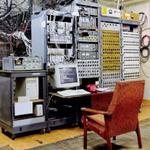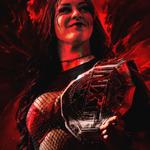 Nemon schrieb:Im Übrigens brauchst du MICH NICHT mehr mit welchen LBJ-Bashings auch immer ansprechen. Das interessiert mich nicht, so lange es keine Beweise oder Indizien für einen Mordkomplott handelt.
Nemon schrieb:Im Übrigens brauchst du MICH NICHT mehr mit welchen LBJ-Bashings auch immer ansprechen. Das interessiert mich nicht, so lange es keine Beweise oder Indizien für einen Mordkomplott handelt.
Was hat das mit "Bashing" zu tun, wenn man Zeitzeugen, Berichte und Historiker zitiert?
Inwiefern ist das Zurückpfeifen von JFKs Leibwächtern während der Schüsse durch Emory Roberts keine Beihilfe zum Mord?
Ist es Zufall, dass Roberts nach dem LBJs engster Mitarbeiter und Freund im Weißen Haus wurde?
Was machen wir mit den Dokumenten zu weiteren Kugeln, die die Einzeltätertheorie widerlegen? Wer außer den Ermittlern von Secret Service und FBI kann diese Beweisstücke verschwinden lassen?
Erinnere dich daran, dass die LBJ-Diskussion von dir ausgelöst wurde:
 Nemon schrieb am 11.07.2019:Wer gewinnt aus dem Ganzen den Eindruck, Johnson habe nur auf diesen Moment gewartet bzw. die Fäden gezogen?
Nemon schrieb am 11.07.2019:Wer gewinnt aus dem Ganzen den Eindruck, Johnson habe nur auf diesen Moment gewartet bzw. die Fäden gezogen?
Wie ich anhand zahhlreicher Quellen, auch von Historikern analysierten, aufgezeigt habe, hat LBJ in der Tat auf so einen Moment gewartet.
Und er hat beim Transport der wichtigsten Beweisstücke, Limousine und LEiche, die Fäden gezogen. Eine Erklärung, warum die Wunde bei der Autopsie größer war als im Z-Film hast auch nicht liefern können- es sei, du nimmst du Aussagen zu ‚Post-Mortem-Chirurgie an der Leiche ernst und den dokumentierten Sargwechsel ernst. Wer hatte
im fraglichen Zeitraum Zugang?
There were two pressing questions. First, should we get airborne or wait for the body of the late president to be brought aboard? The Justice Department was urging swift departure, as was the Defense Department. Without hesitation, LBJ said flatly he would not depart Dallas until the coffin was secure on the plane. He understood intuitively that he could not leave the body of President Kennedy alone in Dallas.
https://www.texasmonthly.com/politics/the-president-is-dead-you-know/After being informed at Parkland Hospital that Kennedy was dead, Johnson raced back to Air Force One, where he waited for Mrs. Kennedy and the body of the slain president, and made preparations to take the Oath of Office.
https://www.huffpost.com/entry/a-new-wrinkle-in-the-jfk_b_339026Hätte der Eingriff an der LEiche überhaupt stattfinden können, wenn LBJ mit seinen auf der AF2 heimgeflogen wären?
Schon mal was von Dr. Burkley gehört? Das war der Leibarzt Kennedys, der sowohl in Parkland als auch in Bethesda anwesend war.
Er äußerte sich in Richtung Verschwörung:
https://www.maryferrell.org/pages/The_Missing_Physician.htmlhttp://22november1963.org.uk/richard-sprague-memo-dr-george-burkley (Archiv-Version vom 11.09.2019) Nemon schrieb:(Erstaunlich, dass nur Nikto zum gleichen Zeitpunkt wie du die gleiche Gedächntislücke in Richtung des AF1-Themas hat.)
Nemon schrieb:(Erstaunlich, dass nur Nikto zum gleichen Zeitpunkt wie du die gleiche Gedächntislücke in Richtung des AF1-Themas hat.)
???
Hast du nicht schon wieder vergessen, dass die AF1-Transkripte und -bänder nicht vollständig sind?
 Nemon schrieb:Und komm mir jetzt NICHT NOCHMAL mit Stoughton und "sinister".
Nemon schrieb:Und komm mir jetzt NICHT NOCHMAL mit Stoughton und "sinister".
Ich kam zuletzt mit Stoughton und "wink". Er erkannte den Wink an, die einzige Frage ist, was hinter diesem steckte. Sogar Debunker erkennen an, dass es ein "Wink" war.
DAVID VON PEIN SAID:
I think Thomas' wink was basically the equivalent of a "Good Luck" handshake. Nothing more.
http://jfk-archives.blogspot.com/2016/08/jfk-assassination-arguments-part-1167.htmlIm selben Link sind wichtige Hintergrundinfos aufgelistet:
3. After LBJ's behavior on the plane became an issue in 1967 (with the release of the Manchester book), all of Stoughton's photos were published. With one exception. The wink photo.
4. When David Lifton contacted the LBJ Library to purchase copies of all the Stoughton photos, they sent him a copy of a print of the wink photo, as the negative had disappeared.
5. Richard Trask confirmed that the negative to the wink photo is missing from the Library.
 Nemon schrieb:der vielleicht ein Rüpel war, in vielen Punkten aber auch ganz anders dargestellt werden kann, als du es hier tust.
Nemon schrieb:der vielleicht ein Rüpel war, in vielen Punkten aber auch ganz anders dargestellt werden kann, als du es hier tust.
Dein Ansatz ist aber genau das Gegenteil dessen, was du eigentlic vorhattest, nämlich den Bullshit auszusondern, Punkte abzuarbeiten und folglich auch mal Fakten festzulegen, Hierarchien zu erstellen.
Dieses "man kann es auch anders sehen/darstellen" ist der krampfhate Versuch, eine Pseudomehrdeutigkeit aufrecht zu erhalten, wo sie nicht angebracht ist.
Wenn dir Dutzende Zeitzeugen, sowohl aus dem LBJ- und dem Kennedy-Lager, Originalberichte und -dokumente, jahrelange Recherchen von Historikern nicht ausreichen, wie willst du dann jemals fähig sein, eine Hierarchie festzulegen?
Wie wär´s wenn dich basierend auf dem Datenmaterial ich mal festlegen würdest? Das heißt aber auch, eventuell von dir lieb gewonnen Vorstellung von Johnson Abschied zu nehmen.
Was war das Ziel der Warren Commission? Natürlich, um die Öffentlichkeit von der Einzeltätertheorie zu überzeugen, aber auch, um LBJ reinzuwaschen:
This "sensitivity," moreover, was in the air and spreading. Deputy Attorney General Nicholas Katzenbach, whose discussions in the days after the shooting sparked the creation of the Warren Commission, testified before the House Select Committee on Assassinations (the "HSCA") on 8-4-78 that he sensed that the rest of the world would suspect Johnson's involvement, and that this in effect "disqualified" Johnson from leading an investigation into Kennedy's death. Katzenbach then explained that this feeling had led him to believe that "some other people of enormous prestige and above political in-fighting, political objectives, ought to review the matter and take the responsibility" of identifying Kennedy's assassin.
He said much the same thing in subsequent testimony. On 9-21-78 he told the HSCA that his primary concern in the aftermath of the assassination was "the amount of speculation both here and abroad as to what was going on, whether there was a conspiracy of the left or a lone assassin or even in its wildest stages, a conspiracy by the then vice president to achieve the presidency, the sort of thing you have speculation about in some countries abroad where that kind of condition is normal." Egads. These words suggest that Katzenbach, who was only running the Justice Department in the aftermath of the assassination, considered Johnson's involvement unthinkable, and not really worth investigating.
And this wasn't the last time Katzenbach suggested as much. In his 2008 memoir Some of It Was Fun, Katzenbach wrote that in the days after the assassination: "Among the many conspiracy theories floating around were those that put conservative Texas racists in the picture and even some that saw LBJ as the moving force."
That Katzenbach's concern about these theories influenced the Warren Commission's investigation, moreover, seems obvious. Howard Willens, a Justice Department attorney reporting to Katzenbach, was made an assistant to Warren Commission General Counsel J. Lee Rankin, and was tasked with 1) hiring the commission's junior counsel (the men tasked with performing the bulk of the commission's investigation), 2) assigning these men specific areas of investigation, 3) supplying these men with the FBI, Secret Service, and CIA reports pertinent to their areas of investigation, 4) working as a liaison between these men and the agencies creating these reports, and 5) helping to re-write the commission's own report. On 7-28-78, in Executive Session, Willens testified before the HSCA, and admitted: "there were some allegations involving President Johnson that were before the Commission and there was understandably among all persons associated with this effort a desire to investigate those allegations and satisfy the public, if possible, that these allegations were without merit."
But these allegations weren't investigated, not really. The Commission's final report amounted to a prosecutor's brief against a lone assassin named Lee Harvey Oswald, and the 26 volumes of supporting data published by the Commission contained next to nothing on Johnson or other possible conspirators.
…
That this "clearing" of Johnson's name was a major factor in the commission's creation is confirmed, moreover, by a memo written by Warren Commission counsel Melvin A. Eisenberg. While reporting on the Warren Commission's first staff conference of 1-20-64, Eisenberg recalled in a 2-17-64 memo that Chief Justice Warren had discussed "the circumstances under which he had accepted the chairmanship of the Commission," and had claimed he'd resisted pressure from Johnson until "The President stated that the rumors of the most exaggerated kind were circulating in this country and overseas. Some rumors went as far as attributing the assassination to a faction within the Government wishing to see the Presidency assumed by President Johnson. Others, if not quenched, could conceivably lead the country into a war which could cost 40 million lives."
Eisenberg's account of Warren's statements was supported, for that matter, by Warren Commission Junior Counsel--and subsequent Senator--Arlen Specter in his 2000 memoir Passion for Truth. In Specter's account, Warren claimed that Johnson had told him "only he could lend the credibility the country and the world so desperately needed as the people tried to understand why their heroic young president had been slain. Conspiracy theories involving communists, the U.S.S.R., Cuba, the military-industrial complex, and even the new president were already swirling. The Kennedy assassination could lead America into a nuclear war that could kill 40 million people..."
And this, apparently, wasn't the only time Warren admitted Johnson's worries extended both beyond and closer to home than the possible thermo-nuclear war mentioned in his autobiography. In his biography of Warren, Ed Cray reported that Warren once confided to a friend that "There was great pressure on us to prove, first, that President Johnson was not involved, and, second, that the Russians were not involved."
http://www.patspeer.com/yourpagestitle behind_eyes schrieb:Mit Verlaub, hierbei handelt es sich um einen russischen Stealth-Helicopter der nach akzeptierter VT-Argumentationsweise erfolgreich neben allen anderen VTs Bestand hat.
behind_eyes schrieb:Mit Verlaub, hierbei handelt es sich um einen russischen Stealth-Helicopter der nach akzeptierter VT-Argumentationsweise erfolgreich neben allen anderen VTs Bestand hat.
Am einfachsten wäre doch, dass die Röntgenbilder manipuliert und eine falsche Fragmentspur eingefügt wurde.
Nikto schrieb:Aber nein, dem frischgebackenen Presidenten konnte es ja nicht schnell genug gehen --- warum wohl?







